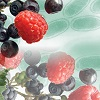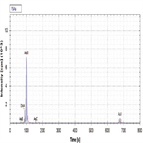Find methods for your needs
Refine by Feature
Displaying 1-3 of 3 results for Tag: Arsenobetaine
AN355: Rapid Extraction and Determination of Arsenicals in Fish Tissue and Plant Material Using Accelerated Solvent Extraction (ASE)
Instrument Type: Automated Sample PrepThe toxicity of arsenic is species dependent. Inorganic arsenic species such as arsenite (As[III]) and arsenate (As[V]) have been classified as carcinogens. Methylated forms such as monomethylarsonic acid (MMA) and dimethylarsinic acid (DMA) have recently been labeled as cancer promoters. Arsenobetaine (AsB), arsenocholine (AsC), and arseno sugars have been found to be relatively nontoxic. This application note describes ASE methods for the extraction of various arsenic species from different food matrices, specifically fish tissue, ribbon kelp, and vegetables grown in contaminated soil.
AN43099: IC-ICP-MS speciation analysis of As in apple juice
Instrument Type: ICInorganic and organic arsenic compounds have very different toxicities, and therefore speciation analysis is needed to assess the potential health risk posed by the food product. Here two inorganic and four organic arsenic species are determined in an apple juice sample using IC coupled to iCAP Q ICP-MS. Arsenic species are first separated by IC using an ammonium carbonate gradient on an IonPac AS7 column. Then the eluting species are detected and quantified by the ICP-MS down to ng/g concentrations. Arsenic speciation is also demonstrated in organic brown rice syrup (OBRS) in AN43126.
AN43126: IC-ICP-MS speciation analysis of As in Organic Brown Rice Syrup (OBRS)
Instrument Type: ICInorganic and organic arsenic compounds have very different toxicities, and therefore speciation analysis is needed to assess the potential health risk posed by the food product. Here two inorganic and four organic arsenic species are determined in an Organic Brown Rice Syrup (OBRS) sample using IC coupled to ICP-MS. Arsenic species are first separated by IC using an ammonium carbonate gradient on a IonPac AS7 column. Then the eluting species are detected and quantified by the ICP-MS down to ng/g concentrations. Arsenic speciation is also demonstrated in apple juice samples (AN43099).



